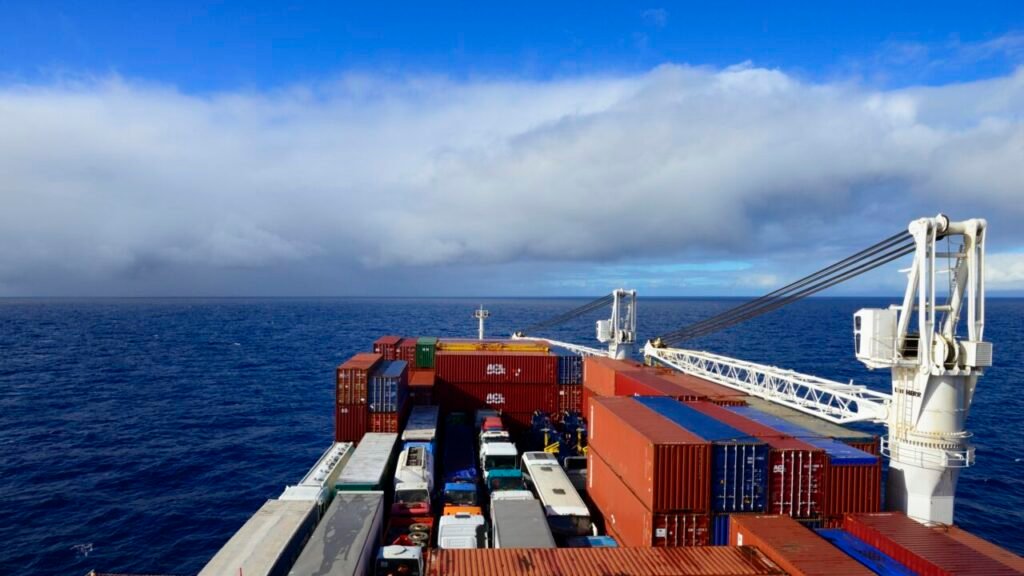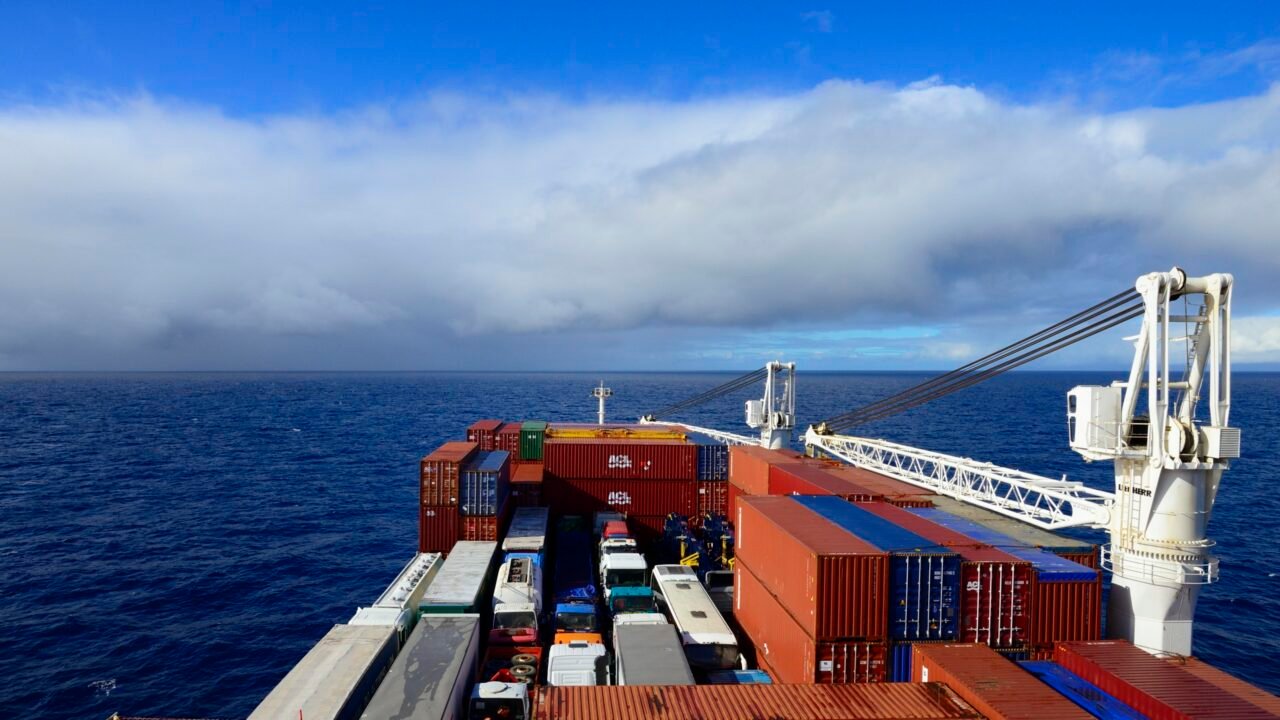
Summary
- Eight months into the second term of Donald Trump, Europeans are still struggling to craft a coherent response to American geoeconomics policies in the trade, investment and financial spheres.
- The Trump administration poses massive challenges to Europe. It has imposed tariffs on nearly all US imports from the EU. It is also considering applying pressure on investors to pick sides between the US and China. Finally, it could soon try to engineer a forced depreciation of the dollar against other major currencies like the euro.
- For the EU, the best response to baffling Trumponomics is to keep calm and carry on. European policymakers should adopt a self-help mindset—resisting the urge to impose retaliatory measures that could damage European economies, avoiding futile fights over US policies that will not change, and above all, holding the bloc together.
- Europeans should also use this turbulent moment to push through controversial economic reforms. Such policies include deepening the single market to support those EU exporters that will lose market share in the US; leveraging access to the EU market for digital services; boosting innovation financing through regulatory changes; increasing the global role of the euro; and bracing for the coming currency wars.
- Europe’s ability to implement much-needed reforms will shape the bloc’s economic prospects, global standing and resilience long after Trump leaves the White House.
Trump Derangement Syndrome
In May 2025, Republican congressman Warren Davidson introduced the Trump Derangement Syndrome Research Act, a bill directing America’s National Institutes of Health to study why some people react negatively to the policies of US president Donald Trump. On the other side of the Atlantic Ocean, Europeans may well be suffering from their own version of Trump Derangement Syndrome—a mix of hysteria, panic and paralysis that is stalling the emergence of a united European response to the Trump storm.
Perhaps because of his business background, Trump’s salvoes against Europe often focus on geoeconomics topics—trade, investment and finance. In these fields, his policies often prove deranging, not least because they are reliably unpredictable, fast-changing and baffling. Amid the Trump-induced chaos, mounting a coherent response is a daunting task. Yet there is hope. The EU can respond to US policies not through futile attempts to control every Trumpian twist and turn, but through steady leadership that turns disruption into opportunity.
This policy brief argues that for Europeans, the best response to Trumponomics is to keep their cool and resist entering into pointless or harmful fights (or both). Instead of pondering Trump’s every utterance, the EU should adopt a self-help mindset, prioritise European unity and save its energy to focus on what it can influence: seizing the chance to push through previously unthinkable economic reforms that will benefit the bloc well after the US president leaves the White House.
Decoding Trump’s plans for trade, investment and finance
Since Donald Trump returned to the White House in January this year, America’s volatile trade, investment and finance policies have caused much transatlantic drama. At the time of writing, the latest major twist took place on July 27th, when the US and the EU announced a trade agreement. Most US imports from the EU now face a 15% tariff. For its part, the EU essentially decided to hold the line, meaning EU firms will not have to pay duties on their imports from the US.
However, there is a catch. The deal is only a non-binding, political declaration—and drama king Trump could walk away from it at any time. Everything remains to be negotiated or, as US commerce secretary Howard Lutnick put it just a few hours after announcing the deal, there is still “plenty of horse trading left to do […]. Digital services, taxes and the attack on our tech companies—that is going to be on the table”. The transatlantic agreement is just a roadmap, and the EU needs to prepare for tough battles ahead in the trade, investment and finance fields.
Trade: Tariffs are stupid
Tariffs are duties that US businesses will pay on their imports from virtually all economies. To cover the tax rise, American firms will have three options: footing the bill (by cutting down on profit margins), passing on higher costs to consumers (thus fuelling inflation), or doing a bit of both. History suggests that US households will bear the brunt of tariffs. During Trump’s first trade wars against China between 2018 and 2020, US firms did not reduce imports from China—in fact, US imports from Chinese firms rose over Trump’s first term. Tariffs were almost completely passed through to consumer prices. American households footed the bill.
No one knows what Trump is really trying to achieve with tariffs this time around—perhaps not even Trump himself. Sometimes the US president talks about reducing America’s ballooning public debt. This will be a tall order, given that tariffs are likely to weigh on US growth and lower overall fiscal receipts. On other occasions, the White House argues that tariffs will push multinationals to open plants on American soil. This has not happened so far, not least because Trump-fuelled uncertainty is spooking global firms. Yet in other instances, Trump talks about creating fair US trade relationships. Economists have no clue what he has in mind.
Leaving Trump’s bombastic declarations aside, two theories may help to shed light on the White House’s objectives with tariffs. The first is that the Trump 2.0 administration believes that the US trade deficit is an issue that needs fixing. If this hypothesis is true, then Washington will almost certainly impose a baseline tariff (of 10-15%) on countries that record a trade surplus with the US. This puts the EU right in the firing line: at €197bn in 2024, the EU’s goods trade surplus with the US is the second largest (after China).
The problem with this theory is that it is at odds with Economics 101. To make the case that a trade deficit is an issue, White House officials conveniently focus on the literal definition of the trade balance: the difference between how much a country buys from abroad and how much it sells to other countries. However, the trade deficit is more than just a numbers game. As the largest component of the current account, it is a broad indicator of a country’s investment and savings patterns. If a country saves more than it invests, it probably records a trade surplus. If it invests more than it saves, then it is likely to run a trade deficit. This is what is happening in America’s case: the US trade deficit is a sign of a buoyant economy with high investment, not of an unhealthy imbalance. Besides, there is no evidence that tariffs can help reduce trade deficits. Most economists agree that tariffs tend to backfire because they disrupt trade flows, weigh on productivity and fuel inflation.
The second hypothesis is that Washington is using tariffs as leverage to force allies to adopt a tougher stance against Beijing. The US Treasury secretary, Scott Bessent, said in April that if the US and its allies struck trade agreements, they would be able to “approach China as a group”—code for jointly adopting measures, such as export controls on key technology, to try to stem China’s economic rise. The EU is the biggest prize for America; the bloc is divided regarding how to approach China, making it the only swing state on this issue among the G7 economies (Britain, Canada, and Japan are hawkish towards Beijing). If the China assumption is correct, then the EU needs to prepare for scenarios where the White House tries to get the bloc to curb economic ties to China (a process also known as decoupling or de-risking).
The transatlantic trade drama tends to focus on goods. But services trade—worth €817bn in 2024, and ranging from consulting and digital platforms to transport—could prove equally contentious in upcoming negotiations between Brussels and Washington. This is because Trump tends to fixate on what he sees as European attacks on US digital platforms, such as the digital services taxes that Denmark, Poland and Portugal are rolling out. Yet Trump’s salvoes against Europe in the services trade field do not make much sense: the US records a huge services trade surplus with the EU, worth €148bn in 2024.
EU-US goods trade ties: The numbers
Investment: Capital is the real deal
True to form, Trump has bold plans in the investment field. According to the America First Investment Policy blueprint, foreign firms keen to invest in the US could soon need to curb their presence in China—highlighting how Washington wants to create a US-led investment bubble that excludes China. For European investors, such a prospect would be daunting: around 30% of EU foreign direct investment (FDI) outflows land in America (the bloc is the largest supplier of FDI on US soil). To make matters worse, it is unclear how the US administration could assess “distance and independence from China”, the two criteria that foreign investors would need to fulfil to have majority ownership of their US investments.
Global investors also worry that Trump’s taxation plans could upend their existing investments in the US, worth $2.7trn in 2022.[1] The One Big Beautiful Bill Act, the fiscal plan that Trump signed into law on July 4th this year, was particularly alarming: the legislation initially planned that the US subsidiaries of foreign firms from countries that have adopted “unfair taxes” (a category that encompasses most EU economies) could face effective corporate tax rates above 50%. The bill also proposed ditching many of the US tax treaties that typically exempt dividend payments to foreign parent companies from tax. Although the measures were eventually struck in the final version of the law, they signal trouble—80% of America’s FDI stock comes from countries that Washington deems to have unfair taxes.
Finance: Trump’s bold plans for the US dollar
Finance forms the third pillar of the upcoming EU-US geoeconomic battles. In recent months, Stephen Miran, the chair of the Council of Economic Advisers and a new member of the board of governors of the US Federal Reserve, has argued for a weaker US dollar. His theory goes something like this: high demand for US Treasury securities, coupled with the greenback’s status as a currency of choice for global trade, artificially props up the value of the dollar. For Miran, this is the cause of the US trade deficit. According to his followers, an overvalued dollar makes US imports too cheap (fuelling Americans’ demand for low-cost Chinese goods) and weighs on the competitiveness of US exports (widening America’s trade deficit).
Most economists find this theory bonkers. The US trade deficit stems from excess investment over savings, not from an overvalued dollar. Yet following on from Miran’s logic, Washington has two main options to redress the situation. First, Trump could offer foreign countries tariff relief if they agree to sell their holdings of US Treasuries in a bid to push down the dollar’s value. For America, enlisting Europe’s cooperation would be crucial for the success of such endeavours. EU central banks and investors hold about one-fifth of the $8.2trn overseas stock of Treasuries.
The second option is bolder. According to Miran, Washington could stop paying interest on foreign-owned US Treasuries. For him, this would be a logical step; withholding interest payments would help America to finance the security guarantees that he believes NATO allies are freeloading on. Such a scenario would essentially be a US default, with uncertain consequences for global investors. What is clear, however, is that such a development would strip US Treasuries of their safe-asset status, sinking demand for US Treasury securities and thus prompting an instant depreciation of the dollar against other currencies.
For the EU, the geoeconomic dimension of the Trump 2.0 challenge is enormous and the drama of the past months is only the start. More battles lie ahead in trade, investment and finance. To best respond to a mercurial US president, EU policymakers need to sketch out broad principles that they can apply to any scenario—even those that seem inconceivable today.
How the EU can fight back
The bloc is not starting from scratch in drafting a mental sanity checklist to manage Trump. Years of grappling with the Make America Great Again (MAGA) crowd have given European leaders a crash course. Drawing on this experience, EU institutions and national capitals should adopt a self-help mindset, save their time and energy to focus on what they can influence, and seek to preserve EU unity.
Adopt a self-help mindset
The trade arena illustrates how the EU can adopt a self-help mindset in its dealings with the Trump 2.0 administration. Europeans need to help themselves by resisting the urge to retaliate against US tariffs: imposing EU retaliatory tariffs—a tax—on imports from the US would amount to economic sabotage (or self-harm). European firms and consumers would bear the brunt of such measures, which would be unlikely to change Trump’s mind anyway.
The fortunes of steel-importing US firms serve to illustrate this self-help point. Because of Trump’s tariffs, US steel-hungry firms now pay roughly 50% more for their steel supplies than their European competitors. Despite Trump’s plans to also impose tariffs on US car imports, steel-hungry automakers may still find it cheaper to produce cars in Europe or Japan and ship them across the Atlantic.
Calls to restrict European exports of products that the US would struggle to source elsewhere, such as semiconductor machinery, would not be more productive. If the priority for Brussels is to support the private sector, then making EU firms the pawns of a transatlantic fight would be a counterintuitive strategy. The same goes for proposals to curtail the access of American firms to EU shipping or insurance services, two sectors in which Europe has a global edge. European shippers or insurers would struggle to stay afloat if they lost their American clients. Adopting a long-term view reinforces this point: if US firms build ties to non-EU providers, it is hard to imagine that they would ever switch back to EU firms.
These examples help to illustrate why econometric modelling suggests that avoiding tit-for-tat retaliation is the best way for Europeans to minimise damage from US tariffs. In a no-retaliation scenario, the hit to EU GDP from US tariffs would be minimal, just 0.1% (this modelling assumes a tariff rate of 60% on US imports from China and a rate of 10% on US imports from other economies, not far from where we stand currently). US trade partners have nothing to gain from adopting Trump’s behaviour to respond to him. Instead, self-help—reducing the Trump-induced damage—should be the mantra of the day.
Be boring
Personal development coaches often like to preach that self-awareness is the foundation of success. This wisdom holds for the EU. A quick look at the bloc’s traits uncovers some of its best assets in the Trump era: being boring, predictable and stable. Such qualities may not be flashy, but they could come in handy. Ask any business leader what they reckon is the main challenge stemming from Trump 2.0 and the answer is likely to be the same: unpredictability. Firms fear the US president’s U-turns more than they worry about his bizarre policies. This is logical. Fast-changing policies force businesses to invest time, energy and money planning for worst-case scenarios.
This situation plays to Europe’s strengths, as it turns the bloc’s solid reputation for being boring, bureaucratic and professional into an asset. Such dullness is exactly what business leaders want to hear about under a bombastic Trump 2.0 administration. What’s more, being boring may well come with another positive side-effect for Europe: Trump the drama king could well find it so unexciting to engage with EU bureaucrats that he eventually loses interest. Europe will never outdazzle Trump on theatrics. The bloc should stick to a self-awareness spirit and do what it does best—blandness.
Save time and energy
Self-care books usually centre on the idea that one should not spend time or energy trying to change things that are beyond their control. Some things are extremely unlikely to change (to her chagrin, the author of this policy brief has come to terms with the idea that she is unlikely to ever become a wing-surf superstar). Other things are out of anyone’s hands (like children’s choices of life partners). Such insights are relevant to draw the third item on Europe’s “personal development” plan for Trump management endeavours: European leaders should not spend too much time or energy trying to fix things that are either unlikely to change or well beyond their control.
Some of Trump’s policies, such as tariffs on the EU, are extremely unlikely to go away entirely. This is a shame, but European policymakers will need to live with that reality over the next three-and-a-half years. There is no point in the EU spending time and energy trying to change Trump’s mind (good luck with that anyway). Instead, the best thing that European leaders can do is to accept the situation and try to limit the damage to European economies. Besides, the private sector probably prefers having the certainty that US tariffs on imports from the EU will stand at 15% for (at least) the next few years than having to worry about the outcome of unpredictable negotiations between Brussels and Washington.
What’s more, two of the most conceivable factors that could lead Trump to reverse course on some of his plans are outside of the EU’s control. The first is legal action, as US businesses are challenging the White House’s authority to impose tariffs. A chunk of US import duties could thus vanish at any time without the EU having to lift a finger. The second factor that could help the US president to change his mind is the financial markets. It took the White House just one week to cancel Liberation Day tariffs in April after financial markets sank. If Trump makes good on plans to weaken the US dollar, a similar rout could ensue—possibly prompting him to reverse course.
Preserve EU unity
The idea that cohesive groups survive better under duress is an old leadership chestnut that bears repeating. A worst-case scenario under Trump would be for each EU member state to try to carve out bilateral deals with Washington, undermining EU institutions and unity. So far, fears of EU fragmentation have been mostly overblown, as Trump has actually had a cohesive effect on Europe. This was perhaps clearest at July’s NATO summit in The Hague, when European leaders rallied amid fears America could retreat from the alliance. Weeks later, almost all member states backed the US-EU trade deal. Only France (for domestic political purposes) and Hungary (a long-standing EU faultfinder) criticised the agreement.
This is reassuring, but European policymakers should not take EU unity for granted. With three-and-a-half more years of Trump to go, EU capitals and institutions will need to make difficult concessions to keep the bloc together. Reconciling the stances of traditional US bashers like France and perennial Washington allies like northern and eastern European member states (starting with Poland and the Baltics) will be especially tough. America’s closest partners in the EU dread losing US security guarantees. As the EU commissioner for trade and economic security, Maros Sefcovic, put it, the trade negotiations with US officials are not just about trade—they are also “about security, […] about Ukraine”.
Get the public on board
Clear communication is a final textbook recommendation of self-help plans. In this vein, the European public has a much better chance of decoding Trump’s salvoes with a sound grasp of economic theory. The European outcry over the US-EU trade deal, with accusations of Brussels “capitulating”, shows that the EU could do a better job of communicating economic theory and data. The messaging on the theory should be simple: Trump’s tariffs will harm the US economy more than they hurt Europe, and EU retaliation would be an act of self-harm. To put it differently, Trump has unilaterally raised taxes on American firms and households, while EU businesses and citizens will not face higher levies.
Now turn to economic data. A better grasp of basic transatlantic trade numbers might have softened the uproar over the EU-US deal. Take the EU pledge to buy $750bn in US energy products by 2028, for instance. This will not happen. To reach this number, American energy firms would need to immediately divert all their exports towards Europe, and even that would not be enough. EU promises to invest $600bn in the US over the next three years also fall under the window-dressing rubric. The figure merely represents existing investment plans from EU firms in America. Brussels has not conceded anything; the bloc just played to Trump’s love for big, impressive figures.
The EU has good reason to avoid debunking such pledges, as Trump could understand that he has been taken for a ride. Yet with a firmer grasp of economics, Europeans would be better armed to weigh the pros and cons of calls for the EU to self-harm with retaliatory tariffs or to look beyond fancy commitments that simply do not add up. Helping Europeans get their facts straight will also help keep the EU united. Otherwise, some governments may buckle under popular pressure and break ranks to chase (hypothetical) bilateral deals with Trump.
US policies and potential EU countermeasures could well become the new normal after Trump leaves the White House. Instead of merely aiming to survive unscathed, European leaders should turn the Trump 2.0 challenge into an opportunity to take on reforms that will benefit the bloc in the long run.
Five steps to future-proof European economies
European leaders can seize the sense of urgency that the US president is fuelling to pass through trade, investment and financial reforms that previously seemed too ambitious or ran up against reluctant member states. In doing so, the EU would stay true to what it does best: step up when crisis strikes.
1. Support EU exporters
Studies suggesting a small macro-level impact of the US tariffs on EU economies will be of no comfort to those European businesses that rely heavily on exporting to America. There is no easy answer to this challenge and some EU businesses will lose US market share under Trump 2.0. Although not a magic fix, Brussels’s best bet to help EU exporters is to deepen the single market and ink narrow trade deals—say, only for specific sectors—with new partners.
Take the domestic side of the trade coin first. Despite trade liberalisation, EU firms still face myriad informal barriers to doing business across the bloc. Such impediments include poor border infrastructure, tangled regulations (there are probably as many interpretations of customs rules as there are member states), language barriers, VAT headaches and overlapping licensing regimes. The tales of Umicore, a Belgian metal recycler, are enlightening: the firm must fax authorisation documents, complete with blue ink signatures, every time it ships electronic goods across the EU to its Belgium-based recycling plant.
Two figures highlight how smoother trade flows within the single market could help EU firms offset potential losses in US market share. First, the IMF reckons that informal trade barriers among EU economies amount to the staggering equivalent of a 44% tariff on intra-EU exchanges of goods—more than Trump will probably ever impose on Europe. Second, intra-EU exchanges of goods totalled €4trn in 2024, around eight times more than EU shipments to the US (all EU member states export more within the bloc than to America). A modest 1.25% boost in intra-EU exchanges would offset a worst-case 10% loss in US-bound exports.
Looking at the global side of the coin, the EU could home in on mini deals—narrow agreements that cover only specific sectors or technical aspects, like safety checks or product-origin standards. The EU already has a host of such deals, notably with Switzerland and Canada. Economists reckon that more such agreements can boost exports of EU-made goods by 15-40% and increase the chances that EU firms will find new export markets by up to 50%. A mini deal with Japan, for instance, lets EU exporters use EU-issued safety certificates for exports to Japan and vice versa (this amounts to a mutual recognition of conformity assessments). The benefits for EU firms are huge: they do not need to find a Japanese lab to guarantee their products meet local safety rules. Mini deals are typically uncontroversial and can be highly effective. For Europe, they are a low-risk, high-reward way to cut red tape and open new export markets.
2. Leverage the EU’s wide market of wealthy digital consumers
Trump likes to zero in on the US goods trade deficit with the EU. In response, Europeans would do well to take a closer look at the services side of the transatlantic trade balance. The bloc’s biggest asset in the field is obvious: market access for (uniformly American) social media platforms. For the likes of America’s Meta (the parent company of Facebook, Instagram and WhatsApp) and X (formerly Twitter), the EU market is indispensable. It is both vast (nearly half a billion consumers) and lucrative. EU “netizens” are wealthy, so advertisers pay a premium to digital platforms to display ads to Europeans.
For services trade, there is a structural asymmetry between Europe and America. Europeans could survive (and maybe even thrive) without social media, but the US parent companies of such platforms would be hit hard if they lost EU revenues. Precedents help to illustrate how the EU could make the best use of this asymmetry: in 2024, the Brazilian supreme court banned X over disinformation concerns during the 2022 presidential election. It took X just over a month to back down, fearing it could lose a market of around 30 million users. The company paid a fine, blocked problematic accounts and appointed a legal representative. If the EU wants to extract concessions from the US, threatening to go down a similar path may prove to be a useful tool.
Granted, following the Brazilian example would be difficult for the EU. Threatening to block access to digital platforms would probably provoke a furious US reaction (although the 2024 fallout between Trump and Elon Musk, who owns X, means this is not certain). In practice, the EU would have at least two options. The first entails taxing digital platforms, for instance, when they train their proprietary AI models on EU content (like this policy brief). This would require unanimity from all member states—certainly a tall order, but not an impossible feat (EU capitals unanimously manage to renew sanctions on Russia every six months, after all). Second, the EU could threaten to tighten the enforcement of existing rules on privacy and harmful content, especially around national EU elections. At the end of the day, enacting such measures may not be the point. The idea, instead, is for the EU to explore its leverage and highlight how it could make use of it.
3. Boost innovation through uncontroversial regulatory changes
Over the past decade, FDI flows into the EU have often centred on US acquisitions of high-tech European firms. Examples include Microsoft’s absorption of Skype for $8.6bn in 2011 and Apple’s purchase of Germany’s Dialog Semiconductor for $600m in 2018. That these high-tech firms managed to thrive on European soil before American firms snapped them up was already quite a feat. Roughly one-third of the 147 unicorns that emerged in the EU since 2008 eventually relocated to the US (often for lack of financing), highlighting that Silicon Valley folks may have a point when they claim it is hard to “build anything innovative” in the EU. This inability to foster innovation weighs on Europe’s credibility vis-à-vis Washington and the EU’s long-term economic outlook.
The first part of the EU innovation bottleneck has to do with financing. This is not a money problem. The bloc records a 2-3% of GDP current account surplus, meaning it typically saves €450bn more than it invests every year. (This is the same investment-savings balance concept that appeared earlier in the policy brief to highlight why the US trade deficit is not a problem that needs fixing). The challenge for the EU lies in unlocking those savings. Easing the regulatory constraints that hamper the ability of EU insurance funds to invest in venture capital funds—investors that finance early-stage startups, allowing them to grow and scale—would be a useful first step. Since 2013, EU startups have received just $130bn in venture capital (VC) financing—about nine times less than their US peers. Second, EU insurers’ assets represent 61% of EU GDP, more than double the US ratio. Channelling even just a tiny fraction of EU insurance funds into European startups could turbocharge European innovation.
Financing is not the only innovation snag. Ask any VC and another hurdle quickly surfaces: the co-existence of different national regulatory regimes, which often makes investments across the bloc daunting. For startups, the single market can feel anything but—and for good reason. Navigating 27 sets of rules in 24 languages is a non-starter for most. To solve this issue, the European Commission is mulling over introducing a 28th regulatory regime. Startups would be able to opt in to an EU-wide business code that would help to bypass the regulatory maze. Such a policy would be a useful first step towards a more seamless European market and pave the way for other similar reforms.
4. Deepen the pool of euro-denominated assets
US policy turbulence gives the EU an opportunity to boost the euro’s role as a global reserve currency at a time when the greenback’s safe-haven status is in doubt. Carving a larger role for the euro as a global currency is a no-brainer: it would boost the bloc’s global influence and reduce worldwide reliance on US dollar-denominated safe assets.
The problem is not one of low demand for euro-denominated debt, but one of limited supply. The combined stock of German bunds, French sovereign bonds and EU-issued securities (including debt from the European Investment Bank) is just €5trn—about five times less than the stock of US Treasury securities ($29trn or around €25trn). The supply of EU assets is also fragmented, because there is no single, EU-wide debt instrument. With too little safe euro-denominated debt to go around, investors are piling into gold. Bullion overtook the euro as the second-largest reserve asset in 2024 (price effects also played a role here).
Political momentum for the issuance of Eurobonds has been building in the bloc over the past few months. In March, German chancellor Friedrich Merz relaxed his country’s debt brake, a rule that placed a 0.35% of GDP ceiling on the country’s structural, annual fiscal deficit. In that same month, an increasingly aggressive Russia pushed the EU to adopt an €800bn ReArm programme for defence investments. By July, the bloc had activated a national escape clause under the Stability and Growth Pact, allowing 15 member states to increase defence spending by up to 1.5 percentage points of GDP annually from 2025 to 2028, without triggering EU excessive deficit procedures.
Rising military spending, coupled with the relaxation of EU fiscal rules for defence expenses, opens the door to building a sizeable pool of Eurobonds for global investors to tap into. Many member states are cash-strapped, so a huge chunk of military expenses will need to be financed through debt issuance. However, the numbers do not add up: even if all new defence spending was financed with EU-wide debt, the EU’s bond supply would only grow by 1% of EU GDP per year—a number far too small to make a meaningful difference in fixing the supply problem.
To overcome this, the EU needs to do some creative thinking. One idea, from former IMF chief economist Olivier Blanchard and Citadel hedge fund economist Ángel Ubide, would be to convert a portion of existing sovereign debt from EU member states into senior Eurobonds. These jointly issued, low-risk securities would command modest interest rates, making them an appealing option for cash-strapped EU member states like Poland or France. The beauty of the scheme is that pooled debt would be essentially risk-free, meaning it would require only minimal risk-sharing among EU member states—a feature that could alleviate opposition from frugal members. Besides, such a scheme would not require changes to EU fiscal rules, facilitating its adoption.
This proposal is only one example of how the EU could expand the pool of liquid Eurobonds. Others go further, for instance by calling for a European debt agency that would roll over existing debt—effectively issuing EU debt on behalf of member states. The politics of such proposals will undoubtedly be complex, but it is hard to imagine a better backdrop for the EU to launch Eurobonds. With Trump seemingly keen to shake up the global financial landscape, the bloc can turn upheaval into a springboard for reforms that will benefit Europeans in the long run—arming the EU with the financial firepower to tackle climate change, boost defence and prepare for the fiscal toll of an ageing population long after Trump’s presidency is over.
5. Brace for the coming currency wars
In 2026, the G20 will take place under the US presidency, giving Washington officials an opportunity to promote the Trump 2.0 agenda. At the summit, Trump could make use of the presence of top foreign official holders of US Treasuries—China, Japan and euro zone central banks—to engineer a depreciation of the dollar against other major currencies.
If Trump offers tariff relief to coax these players into selling off their Treasuries, the EU will quickly face a headache. The US president may not realise that the European Central Bank, and central banks from EU member states, do not have a mandate to negotiate trade issues. This is a problem, as these institutions probably own around half of the EU-held stock of US Treasuries (there is no breakdown of EU holdings of US Treasuries by type of investors, but globally official investors own 47% of foreign-owned US Treasuries). In addition, herding EU private investment funds, which likely own the other half of EU-held US Treasuries, to convince them to sell their holdings of US Treasuries would be next to impossible.
Beyond the difficult logistics, it is not clear whether the EU should pursue such a deal. Broadly speaking, a weaker US dollar (and, thus, a stronger euro) would benefit EU importers but hurt exporters. Since exports are the engine of the EU economy, such a scenario would probably be detrimental to European interests.
What is clear, however, is that EU institutions and key member states like France, by far the bloc’s largest holder of US Treasuries, must prepare for how to manage such US demands at the G20. Teaming up with China, Japan and private Asian and Gulf investors would help present a united global front to Trump.
*
Eight months into Trump 2.0, the roots of the European vintage of Trump Derangement Syndrome may lie in several misunderstandings. Perhaps the English language is misleading. Trump fans think he imposes tariffs on the rest of the world but said (American) fans are the ones paying for these measures. MAGA loyalists appear to believe that global companies will do anything to operate in the US, but US investment policies could well push firms to reconfigure supply chains and financial flows away from America for good. The same goes for Trump’s plans to strip the US dollar of its safe-haven status: instead of imposing costs on others, the US could lose one of its greatest assets—issuing the global currency of choice.
Europeans will survive Trumponomics, which are mainly damaging the US economy. On the other side of the Atlantic, how Europeans react to Trump’s salvoes will shape their economic prospects well after he leaves the White House. To put the EU on rock-solid footing, EU policymakers should remain cool-headed, united and focused on their vision for the future of Europe. They should seek to pursue economic policies that will benefit the bloc in the long haul, no matter what the White House throws their way. Not every provocation demands a reaction. Sometimes courage is to keep calm, carry on and spot the opportunities in adversity.
About the author
Agathe Demarais heads the work of the European Council on Foreign Relations on geoeconomics and tech. Before joining ECFR, Demarais was the global forecasting director of the Economist Intelligence Unit (EIU), the research arm of The Economist. She led the EIU’s global economic and geopolitical analysis, with a particular focus on trade developments, emerging markets, and economic statecraft. Demarais is the author of Backfire, a book on the global ripple effects of sanctions and export controls. The book draws on her experience as an economic policy advisor for the diplomatic corps of the French Treasury in Russia and Lebanon. She also previously worked in investment banking in Russia and the US. Outside of ECFR, Demarais is a columnist for Foreign Policy and a visiting professor at the College of Europe.
Acknowledgments
The author wishes to thank Kat Fytatzi for her contagious enthusiasm about the subject matter, steady willingness to go the extra mile in challenging the author’s writing and creative/thoughtful/joyful editing of this policy brief. Kat has been a brilliant editor to work with, making this policy brief infinitely better than the first draft she initially received. She’s also proved incredibly patient as the author struggled to make up her mind between couples’ therapy and hippo analogies (don’t ask).
ECFR colleagues Chiara Malaponti and Tobias Gehrke gave useful feedback on initial drafts—grazie and vielen Dank! Communications and advocacy superstars Mireia Faro Sarrats, Nele Anders and Pia Jakobi provided stellar support on the outreach front. Nastassia Zenovich did some brilliant magic on the graphs and Martin Tenev made sure all went smoothly on the tech side of things.
ECFR thanks the state secretary for the European Union and the initiative “Hablamos de Europa” (Spanish Ministry of Foreign Affairs, Europe and Cooperation) for their support.






